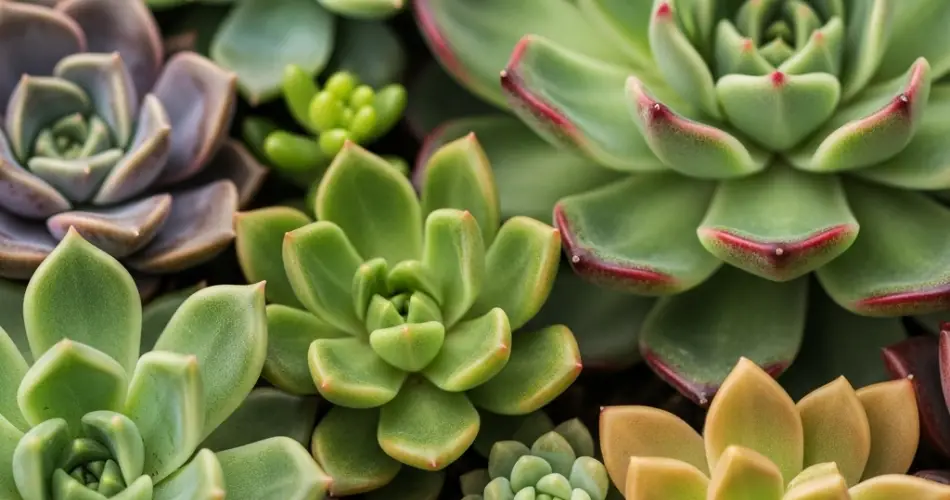Succulents are beloved for their low-maintenance nature, unique appearance, and impressive ability to multiply with ease. One of the most rewarding aspects of growing succulents is propagation—creating new plants from existing ones. Whether you want to expand your collection or save a leggy plant, propagating succulents from leaves or cuttings is simple, fun, and incredibly satisfying. Here’s a complete step-by-step guide on how to do it successfully.
Understanding Succulent Propagation
Succulents can be propagated in several ways, but the most common and beginner-friendly methods are through leaves and stem cuttings. These methods work well for most rosette-forming and trailing succulents, such as echeveria, jade plant, sedum, and graptoveria.
Propagation involves encouraging a leaf or stem to grow roots and eventually form a whole new plant. With a little patience and the right environment, even a single leaf can turn into a thriving succulent.
What You’ll Need
-
A healthy succulent plant
-
Clean, sharp scissors or pruning shears
-
A shallow tray or dish (optional)
-
Cactus or succulent soil mix
-
A bright, warm location out of direct sunlight
-
Spray bottle or small watering can
Method 1: Propagating from Leaves
1. Choose a Healthy Leaf
Look for a full, plump leaf near the base of the succulent. Gently twist it off the stem. It’s important to remove the entire leaf, including the base where it connects to the stem—otherwise, it won’t root properly.
2. Let the Leaf Callous Over
Place the leaf in a dry, shaded area for 2 to 5 days. This allows the end of the leaf to callous over, which prevents it from rotting when placed on soil.
3. Place on Well-Draining Soil
Once the leaf has dried, place it on top of cactus or succulent soil. Do not bury the leaf—just rest it on the surface. Choose a tray, shallow container, or even a wide pot for this step.
4. Mist Lightly and Infrequently
Mist the leaf with water every few days. Avoid soaking the soil, as too much moisture can cause the leaf to rot. Over time—usually within 2 to 3 weeks—you’ll see roots begin to form, followed by a tiny new rosette at the base.
5. Be Patient
The original leaf will begin to wither as the baby plant grows. Once the new succulent is about an inch tall and has its own roots, you can transplant it into a small pot.
Method 2: Propagating from Cuttings
1. Take a Cutting
Using a clean, sharp blade, cut a section of the stem with several leaves attached. The cutting should be at least 3–4 inches long. Remove a few of the bottom leaves to expose the stem base.
2. Let It Callous
Just like with leaves, the cut end of the stem needs to dry and callous over. Place the cutting in a shaded, dry area for 3 to 5 days before planting.
3. Plant in Soil
Once calloused, insert the cut end of the stem into a well-draining succulent soil mix. The base of the stem should be stable in the soil, but not deeply buried. You can use a small stick or rock to help hold the cutting upright.
4. Wait Before Watering
Do not water the cutting right away. Wait 4–7 days after planting to allow roots to begin forming. Once you see new growth or feel resistance when gently tugging the stem, it’s a sign that roots have developed.
5. Resume Normal Care
Begin watering lightly every 7–10 days, allowing the soil to dry out between waterings. Gradually introduce the new plant to brighter light, but avoid intense sun until it is fully established.
Tips for Successful Propagation
-
Use healthy parent plants: The better condition your original succulent is in, the higher the chance of successful propagation.
-
Don’t overwater: Succulents rot easily when exposed to excess moisture. Light misting or infrequent watering is better than too much.
-
Provide indirect light: Bright but indirect sunlight encourages root growth without burning delicate new leaves or cuttings.
-
Be patient: Some succulents root quickly, while others can take several weeks. Avoid disturbing them during this time.
Final Thoughts
Propagating succulents from leaves or cuttings is an easy and budget-friendly way to grow your collection or share plants with others. With just a little care, you can turn discarded leaves or leggy stems into healthy new succulents. Once you try it, you’ll see why so many plant lovers get hooked on propagation—it’s one of the most magical parts of gardening.



